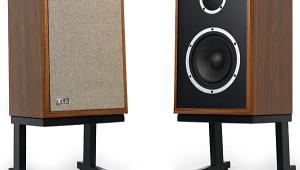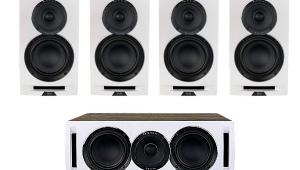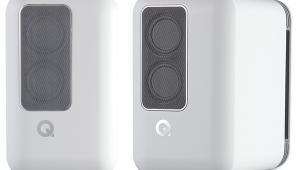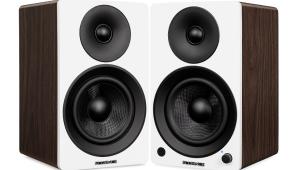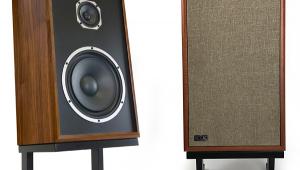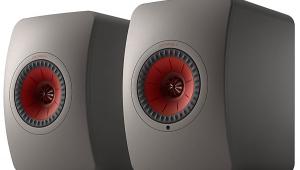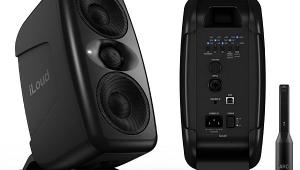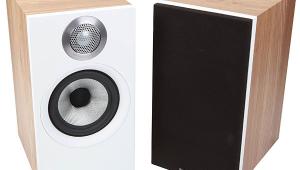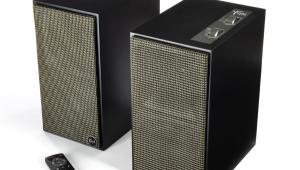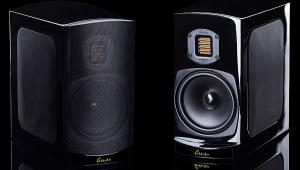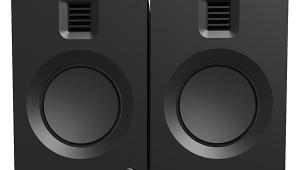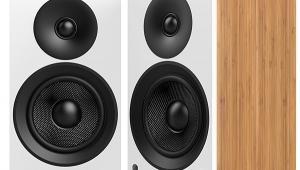Dayton Audio B652-AIR Speaker System Review

AT A GLANCE
Plus
Super affordable
Pleated-diaphragm tweeter
Cinema-friendly voicing
Excellent finish quality
Minus
Lively cabinets
Wire-clip speaker
terminals
THE VERDICT
If you want a home theater system and you want it now, these speakers will suit a draconian budget. Let a thousand starter systems bloom.
Late last year, a Florida man walked into Starbucks and ordered a Grande Latte with 99 extra shots of espresso and 17 pumps of vanilla syrup, mocha, and matcha powder. His tab was $83.75—more than a pair of Dayton Audio B652-AIR speakers. He was a big spender, of course, but if you ordered, say, a White Chocolate Mocha every day for two weeks at $4.65 per cup, you’d still spend more than the price per pair of these speakers.
Yes, when I say the Daytons cost $60/pair, I haven’t missed a zero, though I might be guilty of rounding: The exact Web price is $59.80/pair. If you ditch the pleated planar tweeter for a more conventional dome, the price drops to $39.80/pair for the regular B652—unless you want fries (oops, I meant a Class D amp) with that. Then the price goes to $69.60 for the dome-tweeter version including amplification.
I’m quoting the price of a 5.1-channel setup as $299, though that actually buys you six speakers and a sub. At such prices, you can afford to shove the extra speaker into the back of a closet. As toddler insurance, perhaps. You might also configure the sixth speaker as a single back-surround. Although that would be unusual, it is supported by many AVRs.
No Frills (Well, Not Many)
The B652-AIR will never win any beauty contests, though it’s hardly an eyesore. It looks a lot like the no-frills speakers packaged with home-theater-in-a-box systems. The simple rectangular enclosure is fiberboard, not plastic. It does betray audible resonances when rapped with knuckles, indicating not much (if any) internal bracing or damping.
On the back is a keyhole mount and a pair of spring-loaded wire clips, the cheapest possible speaker terminals. At this price, I’m not complaining. The clips are suitable for pin plugs, bare wire, or the soldered tips of the supplied skinny cables. (Yes, your cheap speakers come with free cables!) In the unlikely event that you want to use terminated speaker cables, you’ll have to go for the pin connectors—and that’s what I did, unscrewing the banana plugs from my Monster 1.2s cables to use the underlying pins. I routinely warn that this kind of wire clip will not stand up to rough use. Treat them gently.
A detachable cloth grille is a pleasant surprise at this price. Pull it off the sealed enclosure, and you’ll find a 6.5-inch polypropylene-cone woofer and something fairly special: a folded-diaphragm planar magnetic tweeter, what Dayton Audio calls an Air Motion Transformer or AMT. Protected by a horizontal hard-plastic-ribbed grille and subtly shaped by a waveguide, the tweeter measures an inch square and the diaphragm is made of Kapton, a temperature-resistant polyamide film developed by DuPont. The pleated design uses a squeezing motion to create air-pressure changes (which our ears perceive as sound). Lest you think this is one of those ruthlessly revealing speakers, Dayton actually has voiced them fairly gently. It might tickle your ears, but it won’t singe them.
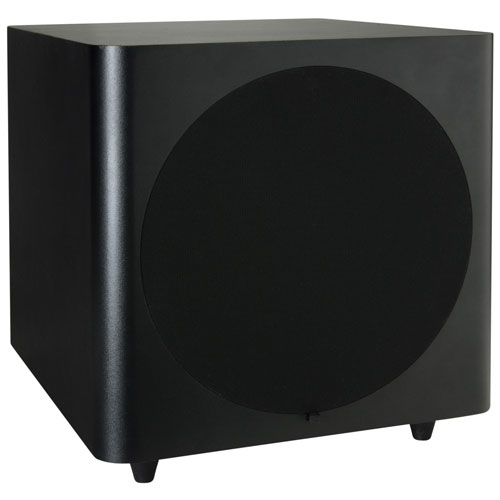
I reviewed the B652-AIR with the SUB-1000 subwoofer. Backing up the 10-inch front-firing woofer is a conservatively rated 100-watt RMS amp. Modest cosmetic touches include curved side edges and a round speaker grille. On the back is a pair of line-level stereo inputs. The speaker-level ins and outs use wire clips.
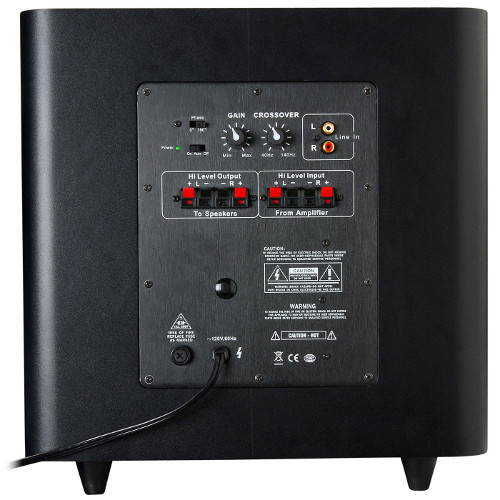
Associated equipment included a Pioneer Elite VSX-53 A/V receiver, which at its original price of $1,100 would buy 18 pair of these speakers. (Sorry, once I got started on these calculations, it was hard to stop.) Also in harness were an Oppo BDP-83SE universal disc player, Micro Seiki BL-21 turntable, Shure V15MxVR/N97XE cartridge, and the phono stage of a Denon PRA-S10 preamp. All movie demos were on Blu-ray Disc.
Not So Cheap After All
Before break-in, the Daytons sounded like cheap speakers with obvious coloration. Aha, I thought: You get what you pay for. However, six hours of use were transformative in this case. The coloration faded away except for a smidgen of cabinet resonance. Mid and high frequencies opened up and dispersed commendably well, both on and off axis; there wasn’t a bad seat in the house. Although the pleated tweeter wasn’t the airiest one of its kind I’ve heard (the
“AIR” in the model designation notwithstanding), the top end
was consistently listenable with all kinds of content. These speakers did love movies.
I should add that my default is always to listen with grilles on. Dayton’s grille frame is a layer of fiberboard with cutouts for the drivers. Grilles almost always affect the speaker’s frequency response and diffraction patterns, though it didn’t perceptibly hobble the tweeter’s wide horizontal dispersion. Removing the grilles boosted the presence region, and some listeners may prefer that.



